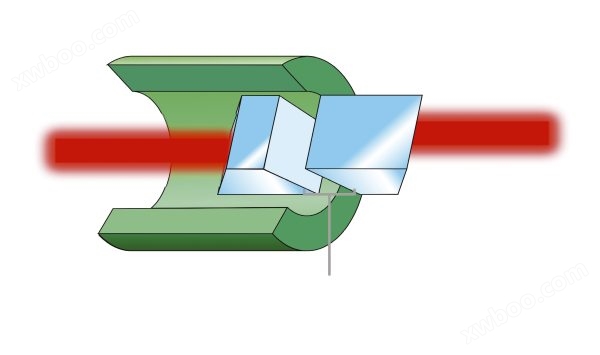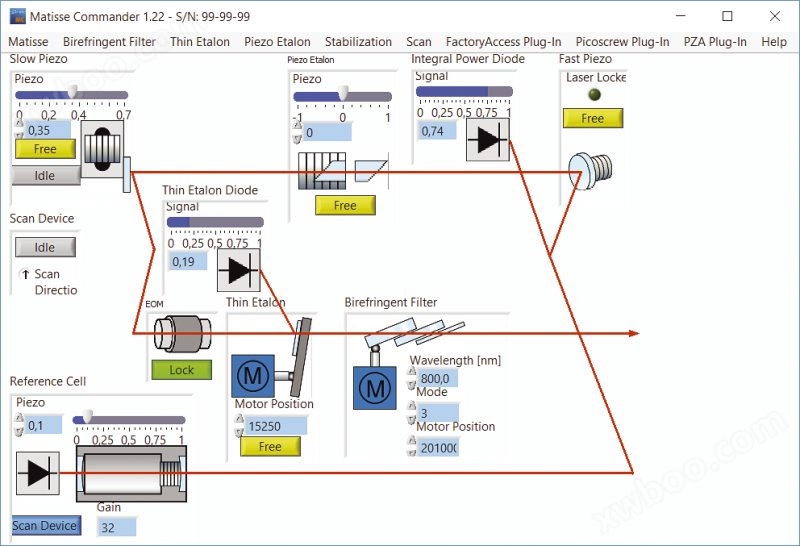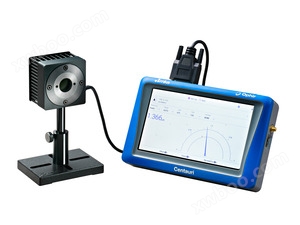詳細(xì)介紹
產(chǎn)品規(guī)格
規(guī)格1
| Matisse 2 TR | Matisse 2 TS | Matisse 2 TX-light | Matisse 2 TX | Matisse 2 DR | Matisse 2 DS | Matisse 2 DX | |
|---|---|---|---|---|---|---|---|
| 激光增益介質(zhì) | Ti:Sapphire | Ti:Sapphire | Ti:Sapphire | Ti:Sapphire | Dye | Dye | Dye |
| 線寬5 | <4 MHz rms | <50 kHz rms6 | <50 kHz rms6 | <30 kHz rms6 | <20 MHz rms6 | <200 kHz rms6 | <100 kHz rms6 |
| 空間模式 | TEM00 | TEM00 | |||||
| 光束直徑2 | 1.4 mm (典型值) | 1.4 mm (典型值) | |||||
| 光束發(fā)散角7 | <1 mrad | <1 mrad | |||||
| 振幅噪聲 | <0.1% rms (泵噪聲之上,正交增加) | <0.5% rms | |||||
| 掃描范圍 | >50 GHz (@ 780 nm) | >60 GHz (@ 575 nm) | |||||
調(diào)諧范圍3,8
| Matisse 2 TR | Matisse 2 TS | Matisse 2 TX-light | Matisse 2 TX | Matisse 2 DR | Matisse 2 DS | Matisse 2 DX | |
|---|---|---|---|---|---|---|---|
| MOS-1 光學(xué)組件 | 680-790 nm | 680-790 nm | 680-790 nm | 690-770 nm | - | ||
| MOS-2 光學(xué)組件 | 750-870 nm | 750-870 nm | 750-870 nm | 750-870 nm | - | ||
| MOS-2-BB 光學(xué)組件 | 730-930 nm | 730-930 nm | 730-930 nm | 730-930 nm | - | ||
| MOS-3 光學(xué)組件 | 880-1038 nm | 880-1038 nm | 880-1038 nm | 880-1010 nm | - | ||
| MOS-4 光學(xué)組件 | - | 550-660 nm | 550-660 nm | 550-660 nm | |||
| MOS-5 光學(xué)組件 | - | 650-760 nm | 650-760 nm | 650-760 nm | |||
輸出功率4
| Matisse 2 TR | Matisse 2 TS | Matisse 2 TX-light | Matisse 2 TX | Matisse 2 DR | Matisse 2 DS | Matisse 2 DX | |
|---|---|---|---|---|---|---|---|
| Millennia eV 25 W 泵 | 7.2 W | 6.2 W | 6.0 W | 4.5 W | |||
| Millennia eV 20 W 泵 | 5.5 W | 4.7 W | 4.5 W | 3.4 W | |||
| Millennia eV 15 W 泵 | 3.8 W | 3.3 W | 3.0 W | 2.2 W | |||
| Millennia eV 10 W 泵 | 2.0 W | 1.6 W | 1.8 W | 1.4 W | |||
| Millennia eV 5 W 泵 | 0.8 W | 不適用 | 0.8 W | 不適用 | |||
Millennia 泵浦激光器和實(shí)驗(yàn)室要求
| Matisse 2 TR | Matisse 2 TS | Matisse 2 TX-light | Matisse 2 TX | Matisse 2 DR | Matisse 2 DS | Matisse 2 DX | |
|---|---|---|---|---|---|---|---|
| 泵激光偏振 | 水平 | ||||||
| 泵激光器功率 | 5-25 W | ||||||
| 環(huán)境條件 | ±0.5°C @ 20-25°C, 非冷凝濕度條件 | ||||||
| 冷卻 | 從晶體去除 20 W 的熱量所需的水;推薦與 Millennia 冷卻裝置串聯(lián); 建議 16–21°C 范圍內(nèi)變化 ±0.1°C 染料型號(hào): 從染料循環(huán)器去除 100 W 熱量所需的水 | ||||||
| 實(shí)驗(yàn)室 | 振動(dòng)隔離光學(xué)臺(tái)、無塵空氣 (流動(dòng)箱) | ||||||
| 電氣特性 | 100-250 VAC, max 2.5 A | ||||||
| 計(jì)算機(jī)控制 | Windows 操作系統(tǒng) | ||||||
注釋:
- 由于我們的產(chǎn)品優(yōu)化計(jì)劃是連續(xù)性的,規(guī)格如有變更,恕不另行通知。
- Matisse 2 輸出端口處。
- 規(guī)格適用于 Millennia eV 15 W、20 W 及 25 W 泵激光器。 請(qǐng)咨詢廠家了解其他泵功率。
- 使用鈦藍(lán)寶石增益介質(zhì)時(shí)為 780 nm,使用染料增益介質(zhì)時(shí)為 R6G 染料峰值。
- 在大于 100 毫秒的時(shí)間范圍內(nèi)測(cè)量線寬。
- 相對(duì)于內(nèi)置參比腔體的線寬。
- 半角測(cè)量。
- 根據(jù)要求擴(kuò)展調(diào)諧范圍。 請(qǐng)聯(lián)系 Spectra-Physics。
特征
Out of Plane Ring Resonator

The Out of Plane cavity design is a stable and more reliable configuration delivering years of worry free operation. All CW ring lasers support uni-directional propagation of light within the laser cavity. Most ring lasers utilize a thin intracavity waveplate which is easily damaged, resulting in lower output power and performance. The Matisse lasers are configured with an Out of Plane cavity design eliminating the need for this thin waveplate.
Narrowest Linewidth
The Matisse is available with three levels of frequency stabilization: Passive stabilization with phase lock loop, active stabilization with reference cell, and active stabilization with Pound-Drever-Hall locking for ultranarrow linewidths to <30 KHz (100 ms integration time).
Mode-Hop-Free Tuning
Superior mechanical stability, specially designed optical mounts, unique tuning methods, and the preferred Out of Plane cavity design of the Matisse C all contribute to the exceptional mode-hop-free scanning range of >50 GHz. In order to take this to the next level, we have developed “Scan Stitching" for wide mode-hop-free tuning over the full wavelength range (up to 300 nm).
Flexure Optical Mounts for Optimal Power Flatness
Even the smallest tilts in linear travel when wavelength tuning by changing the cavity length of a ring laser will result in decreased output power. All optics meant to travel linearly in the Matisse are mounted on flexure optical mounts. These mounts enlarge the scan range and guides linear translation, therefore providing power flatness to within 5% across 50 GHz of mode-hop-free tuning.

Pumped by Millennia® eV™ DPSS Laser
The Millennia eV platform is based on Spectra-Physics’ It’s in the Box™ design, where the laser optical cavity, diode and control electronics are all integrated in a single, compact package, eliminating the need for an external power supply. With its industry leading scalability from 5 W to 25 W average power and high reliability, Millennia eV is the next generation laser of choice for demanding scientific applications such as the pumping of CW Ti:Sapphire lasers.

Two Etalons
The unique cavity design of the Matisse incorporates two etalons. The second etalon provides increased long term mode stability. This “thick etalon" uses air gap technology for maximum locking stability.

Variable Low Frequency Locking
CW single frequency ring lasers utilize a Phase Lock Loop (PLL) in order to stabilize the laser cavity to a single longitudinal mode. The Matisse incorporates a unique PLL technique that delivers low dither frequencies (down to 500 Hz) to minimize laser noise and allows easy adjustability of the frequency (500 Hz – 3 kHz) via software.
Counter Drift Option
The Matisse can counteract the wavelength drift which is specific to any tunable CW single mode laser. To further counteract drift for a Matisse without reference cavity, a good wavemeter can be used as reference. Or for a Matisse laser with reference cavity an optional strain gauge can be installed on the scanning piezo. It is also possible to use the Matisse reference cavity as a transfer cavity or to stabilize it to an atomic resonance or a frequency comb.
Matisse Software Control

- Fully Automated Software Control: The Matisse is controlled with an intuitive GUI allowing fully automated and easy operation. Functionality, such as wavelength selection, piezo scanning, and frequency locking are easily visualized with a pictorial schematic of the Matisse laser cavity. Other GUI windows display automated monitoring of beam alignment and laser performance.
- Dynamic Scan Range: The Dynamic Scan Range function allows easy adjustment of the wavelength tuning resolution. This is achieved via a built in switchable piezo amplifier with easy software control. Tuning resolutions down to 50 kHz can be selected when fine wavelength adjustments are needed.
- Automated Scan Stitching: The Matisse can perform indefinitely long scans by stitching the 50 GHz scans together. An implemented software routine automatically optimizes the position of all the optical elements involved in wavelength selection, allowing to scan the laser in 50 GHz steps without the need to manually reset or realign any components.
Matisse 2 TR 和 DR
Matisse 2 R 系列環(huán)形腔激光器采用機(jī)械*設(shè)計(jì),可實(shí)現(xiàn)的被動(dòng)穩(wěn)定性以及超低噪音的單頻運(yùn)行。Matisse 2 R 系列環(huán)形腔激光器采用機(jī)械*設(shè)計(jì),可實(shí)現(xiàn)的被動(dòng)穩(wěn)定性以及超低噪音的單頻運(yùn)行。電子力驅(qū)動(dòng)的波長選擇元件 - 雙折射濾光器、厚校準(zhǔn)器和薄校準(zhǔn)器 - 使激光器在單縱模上保持居中。這樣可實(shí)現(xiàn)很長的無跳模波長掃描,同時(shí)保持恒定的低噪音輸出功率水平。
Matisse 2 TR 鈦寶石環(huán)形激光器提供 <4 MHz 光譜線寬,并且可以很容易地升級(jí)為更高分辨率的 Matisse 2 TS。實(shí)際上,由于其模塊性,任何 Matisse 2 激光器都可現(xiàn)場(chǎng)升級(jí)為鈦寶石或染料增益介質(zhì),或者升級(jí)為更高分辨率的配置,即從 R 系列升級(jí)為 S 系列或 X 系列。
Matisse 2 TS 和 DS
Matisse 2 S 系列主動(dòng)穩(wěn)定性環(huán)形腔激光器采用外部參考腔體,可對(duì)腔長度穩(wěn)定化的快速壓電驅(qū)動(dòng)反射鏡進(jìn)行反饋。為保證真正獨(dú)立的頻率反饋信號(hào),參考腔體與熱和機(jī)械擾動(dòng)*隔離,并在激光器外殼外部進(jìn)行光纖耦合。Matisse 2 TS 主動(dòng)穩(wěn)定性鈦寶石環(huán)形腔激光器具有 <50 kHz 內(nèi)部光譜線寬,而 Matisse 2 DS 染料環(huán)形激光器提供 <250 kHz 光譜線寬。
Matisse 2 TX 和 DX
Matisse 2 X 系列環(huán)形腔激光器為鈦寶石主動(dòng)增益介質(zhì)提供低于 30 kHz 光譜線寬,為染料激光器提供 100 kHz 光譜線寬。這種超窄線寬是極快的腔長度穩(wěn)定化與 MHz 級(jí)響應(yīng)帶寬相結(jié)合的產(chǎn)物。腔內(nèi)電光調(diào)制器 (EOM) 的使用讓這種超窄線寬得以實(shí)現(xiàn)。
實(shí)現(xiàn)這種超窄線寬的另一個(gè)關(guān)鍵是來自采用 Pound-Drever-Hall 穩(wěn)定化方案的外部參考腔體以及高精度外部參考腔體的反饋誤差信號(hào)。Pound-Drever-Hall 提供準(zhǔn)確的不受激光強(qiáng)度波動(dòng)影響的波長位置測(cè)量。
Matisse 2 TX-light
Matisse 2 TX-light Matisse 2 TS 與 Matisse 2 TX 之間的線寬空白。它利用 Pound-Drever-Hall 鎖定技術(shù)和 TX 的高分辨率參考腔體,向 TS 的快速壓電驅(qū)動(dòng)反射鏡提供反饋信號(hào)。Pound-Drever-Hall 方法可以忽略對(duì)強(qiáng)度波動(dòng)的敏感性,再加上它提供的極其穩(wěn)定的鎖定技術(shù),造就了低于 60 kHz 的激光線寬。
兼容的功率傳感器
要驗(yàn)證和分析 Matisse 2 激光器的輸出功率,我們推薦使用 Ophir 10A (7Z02637) 熱功率傳感器和 Centauri 激光功率計(jì)。 有關(guān)此激光測(cè)量設(shè)備的更多信息,請(qǐng)?jiān)L問 網(wǎng)站。 其他 Ophir 傳感器和儀表也可能適用于 Matisse 2,詳細(xì)情況取決于具體應(yīng)用。 Ophir 還與激光系統(tǒng)開發(fā)人員合作,實(shí)現(xiàn)嵌入式光束診斷,提供了監(jiān)控系統(tǒng)性能的 OEM 解決方案。

 機(jī)床商務(wù)網(wǎng)
機(jī)床商務(wù)網(wǎng)






 機(jī)床商務(wù)網(wǎng)
機(jī)床商務(wù)網(wǎng)